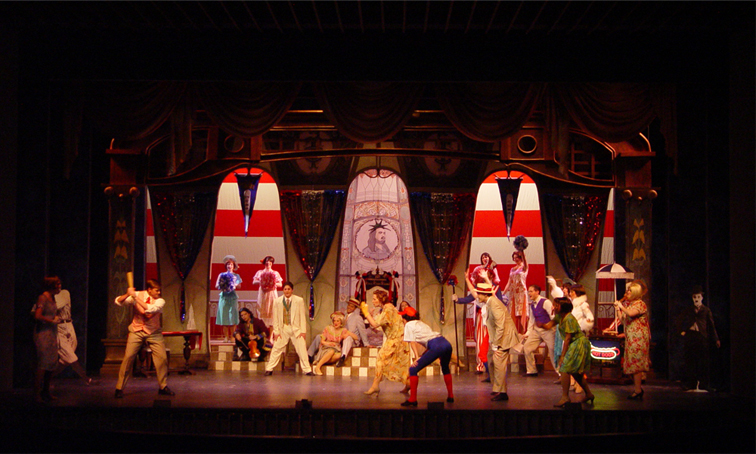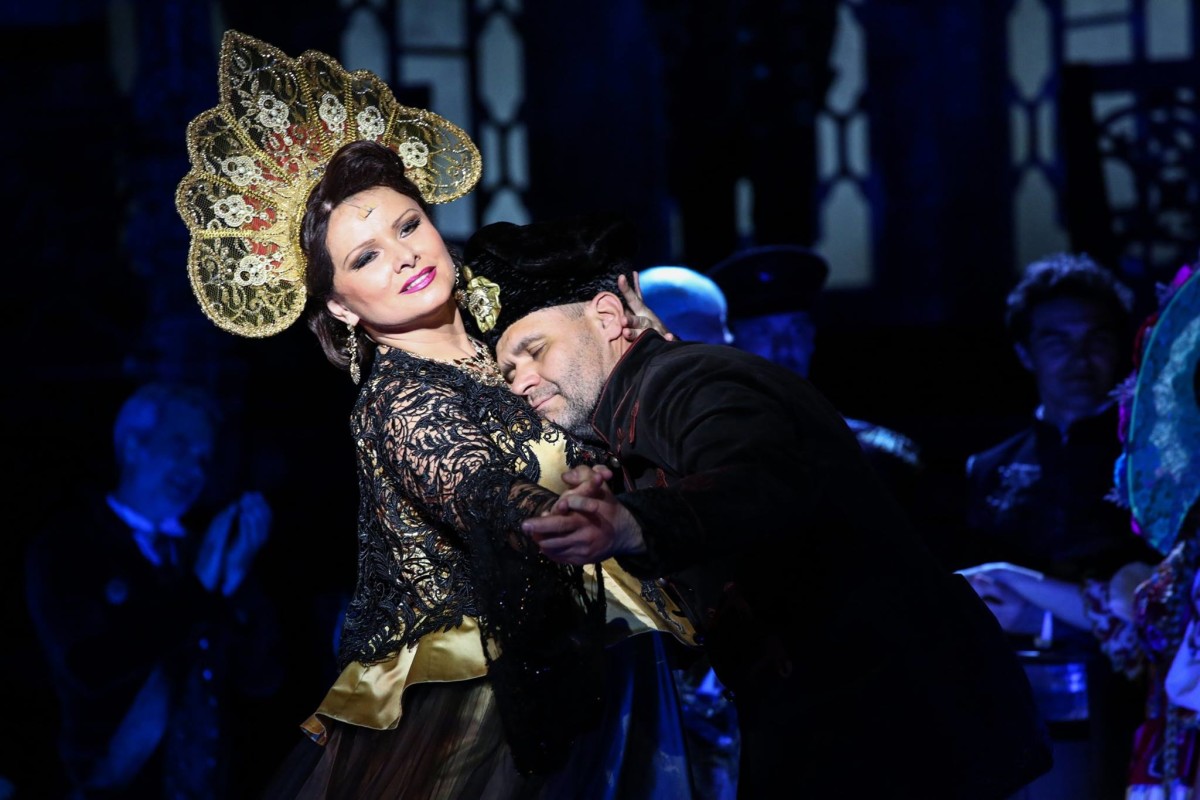James McLaughlin Smith
Operetta Research Center
10 September, 2017
I have just seen the much-heralded Budapest Operetta Theatre’s re-imagining of Kálmán’s 1928 musical mashup, Die Herzogin von Chicago, at the Deutsches Theater in Munich. And I have many disparate thoughts and impressions to relate, which one hopes aren’t too superficial, as (spoiler alert) I don’t speak German and there were no supertitles. I’m not, however, entirely unfamiliar with the piece.

Poster for the German premiere of “Herzogin von Chicago” at the Deutsches Theater, Munich.
Several years ago I saw the video of the Vienna production at a party (with sketchy attention span) and all I really recall is that it was quite lavish and the English subtitles were racially insensitive (the N-word was used to describe “their” music. It surprised me. Not that it was in the original book, but that Vienna didn’t feel the need to make some changes.) And then the English language version, as presented by Ohio Light Opera, which was very sanitized, and not without its modest charms.

Scene from the 2nd act of “Duchess of Chicago” at Ohio Light Opera, set design by Kirk A. Domer. (Photo: OLO)
But little could prepare me for the overwhelming frisson of this production. It’s ‘operetta on acid,’ albeit a fun, kicky, downer-free trip. Let me say right off, Act I plays like gangbusters; seamless Broadway-ready brilliance. It’s really a revue, with one sensational ‘anything you can do I can do better’ number after another. Perhaps I felt a longueur or two in Act 2 when the Operetta 1.01 plot machinations took over, but no matter.

“Die Herzogin von Chicago” at the Budapest Operetta Theater. (Photo: Budapesti Operettszínház )
I’m told the book has been extensively reworked. New characters appear, others are given more to do than previously, and some music has been borrowed from elsewhere. What remains intact is the central driving conceit: Jazz Age vs. Belle Epoque; Charleston vs Waltz, Operetta vs. Broadway-style musical. But this ‘tree’ has a whole new bag of trimmings. A juicy new role of Queen Mother has been created for BOT’s diva emeritus, Zsuzsa Kalocsai, and she makes the most of it, with regal command.

Diva Zsuzsa Kalocsai in one her glorious moments in “Herzogin von Chicago”. (Photo: Budapesti Operettszínház)
Monica Fiscal brings great style, beauty and pizzazz to the titular heroine, Mary Lloyd, with echoes of Cabaret and Chicago naughtiness (and a brilliant assist from the fabulous costumes: I especially loved the contrast from all the black, pink and red leather of Act I to the moment in Act II when she looks like a piece of lemon chiffon pie).
And Zsolt Homonnay is just perfect as Sandor Boris. All charismatic butchness, and yes, the chemistry with Monica is palpable. His big number, a csardas song and dance flanked by his men, is a knockem’ dead showstopper; an almost violent foot stomper that builds to a feverish climax that is thrilling and liberating and breathtaking (the rest of the show never quite gets to that orgiastic point again, and Act 2 could have used it).
The rest of the cast are superb and everyone has a chance to shine. And it’s all staged and directed and choreographed with verve, wit, inventive propulsive ideas, abundant visual jokes; it just moves!
Side notes: there are many idiomatic English phrases and epithets scattered throughout that feel entirely believable and appropriate. But a “James Bond(y)” joke and double take, while funny the first time, the fourth, not so much. The second act opens with a bizarre fashion show with the cast amusingly costumed as cartoon and comic book icons, such as Spider Man, the Seven Dwarfs and Mickey and Minnie Mouse. It’s totally in keeping with the edgy satire and surreal charge of it all (we’ve already had Chippendale-like male dancers and hipster musicians; Stefan Frey says in 1928 “ironic costume pranks … pervaded the production”). So we can see it’s the 1920’s, but it’s also today (and we all know, don’t we, that ‘period pieces’ aren’t only about their context but the current zeitgeist as well—so suck-it up, purists).
A word about tempi. So vital to Kalman, and his often fluctuating rhythms There are ritardandi so long and slow you feel it’s all going to collapse, and then the accelerandi – and you’re in a whirlwind of seemingly out of control frenzy in which it is nearly impossible to keep up ones clapping with the breakneck tempo.
Recently Ohio did what I considered a solid Maritza, even though from time to time, musically, it was just way too slow. This would never happen at BOT. It’s in their DNA. And this ensemble kicks ass.

Nicely written, Mr Smith!